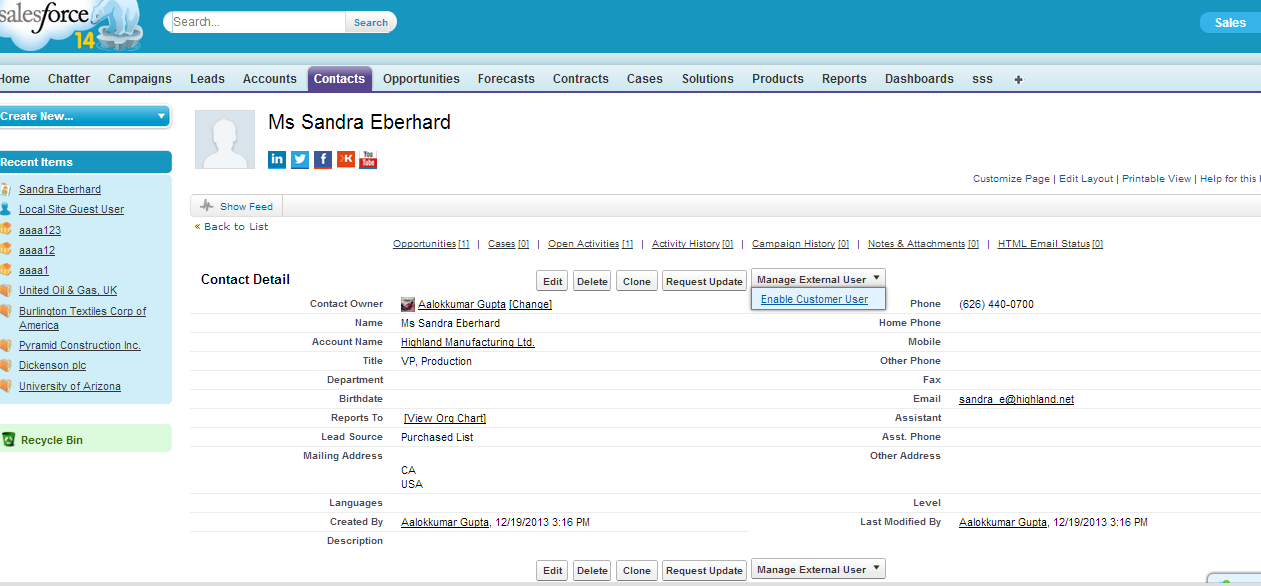/*
*/
<apex:page controller="vf10controller">
<apex:form >
<apex:pageBlock >
<apex:pageBlockButtons >
<apex:commandButton value="Customer Direct Account" action="{!direct}"/>
<apex:commandButton value="Customer - Channel Account" action="{!channel}"/>
</apex:pageBlockButtons>
<apex:pageblocksection title="My account" >
<apex:pageblocktable value="{!acts}" var="row" >
<apex:column >
<apex:commandLink value="{!row.name}" action="{!racts1}" rerender="abc">
<apex:param value="{!row.id}" name="aid"/>
<apex:param value="{!row.name}" name="aname"/>
<apex:param value="{!row.industry}" name="aindustry"/>
</apex:commandLink>
</apex:column>
<apex:column value="{!row.type}"/>
<apex:column value="{!row.industry}"/>
</apex:pageblocktable>
</apex:pageblocksection>
<apex:pageblocksection title="{!$CurrentPage.parameters.aname}" id="abc">
<apex:detail subject="{!$CurrentPage.parameters.aid}"/>
<apex:pageblocktable value="{!racts}" var="row" >
<apex:column value="{!row.Name}"/>
<apex:column value="{!row.type}"/>
<apex:column value="{!row.industry}"/>
</apex:pageblocktable>
</apex:pageblocksection>
</apex:pageBlock>
</apex:form>
</apex:page>
-----------------------------
public class vf10controller {
List<Account> r_acts;
// string type;
List<Account> acts = [SELECT name,type,industry,phone,ownerid FROM Account ];
public List<Account> getacts(){
return acts;
}
public List<Account> getracts(){
return r_acts ;
}
public PageReference direct(){
//type = 'Customer - Direct';
acts = [SELECT name,type,industry,phone,ownerid FROM Account WHERE Type ='Customer - Direct'];
return null;
}
public PageReference channel(){
// type = 'Customer - Channel';
acts = [SELECT name,type,industry,phone,ownerid FROM Account WHERE Type = 'Customer - Channel'];
return null;
}
public pagereference racts1(){
r_acts =[SELECT name,type,industry,phone,ownerid FROM Account WHERE Industry =: ApexPages.CurrentPage().getParameters().get('aindustry') ];
return null;
}
}
--------------------
























